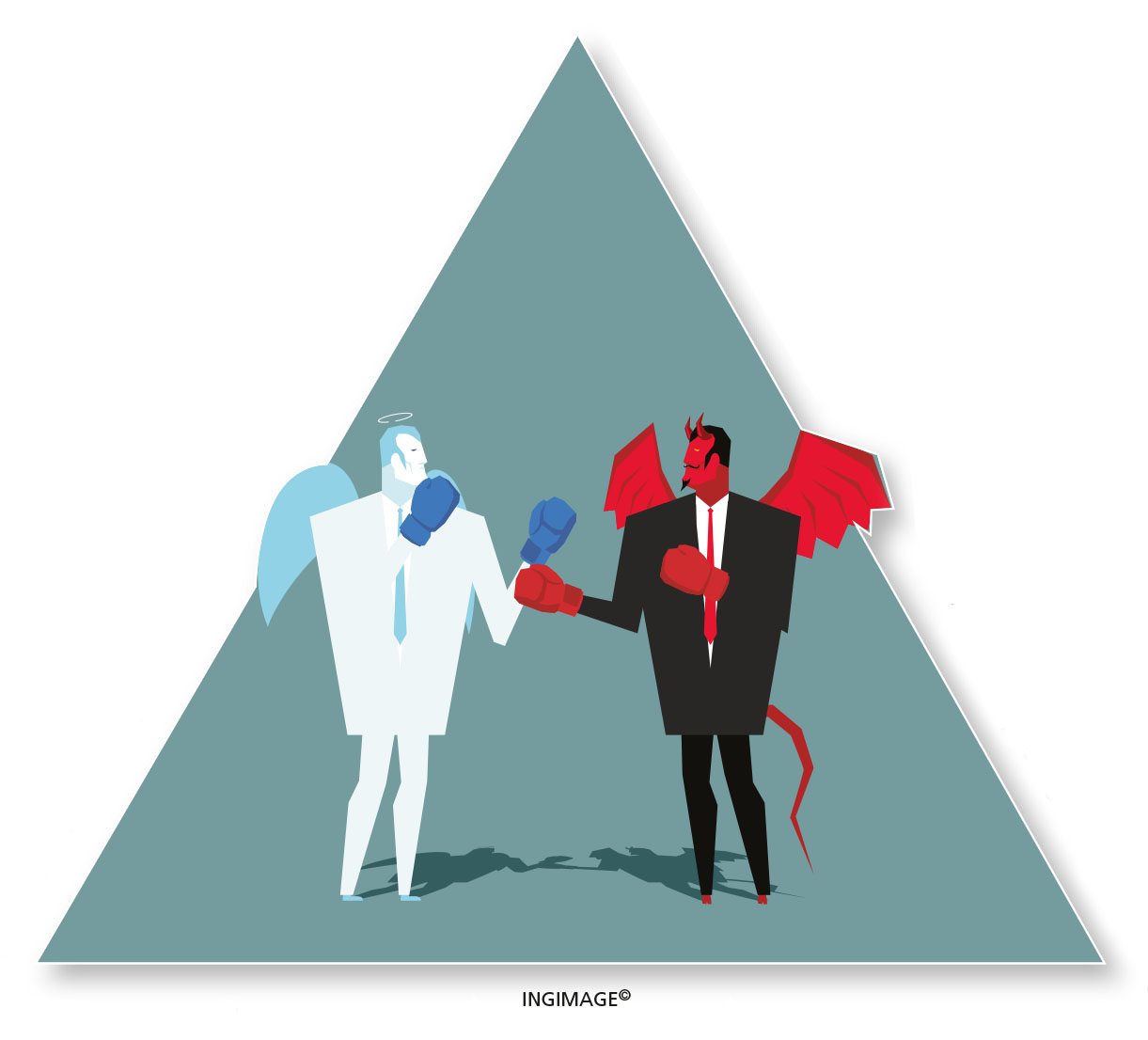CONFLICT MANAGEMENT
STAY THE COURSE
Jayashantha Jayawardhana on how to deal with conflict
Turf wars destroy even the best companies; and so does groupthink, albeit in a different way. The common denominator between what seems to be polar opposites is that both have political origins. They’re a zero-sum game where one team or department has to lose for another to win… at the expense of the company’s progress.
Groupthink is the end result of myopic consensus where the collective decision is not to take a contrarian stance lest they lose political gains and become isolated within the company.
In an article in the Harvard Business Review (HBR) titled ‘How Management Teams Can Have a Good Fight,’ business scholars Kathleen Eisenhardt et al. argue that “reasonable people making decisions under conditions of uncertainty are likely to have honest disagreements over the best path for their company’s future.”
And they add: “Management teams whose members challenge one another’s thinking develop a more complete understanding of the choices, create a richer range of options and ultimately make the kinds of effective decisions necessary in today’s competitive environments.”
Conflict can be healthy as long as it arises out of a broader perspective beyond self-interest. But healthy conflict can turn unproductive in next to no time.
A comment intended as an objective remark could be interpreted as a personal attack. Stress and frustration over tough choices could morph into anger directed at colleagues. And then personalities become entangled with issues, and most managers find it exceedingly difficult to acknowledge let alone manage this emotional and irrational dimension of their behaviour.
So how can you keep constructive conflict over issues from degenerating into dysfunctional interpersonal wars? How do you encourage managers to argue without destroying their ability to work as a team?
Researchers cite the following six tactics used by companies for managing interpersonal conflict and encouraging lively debate over important issues.
FOCUS ON FACTS Even if inexperienced executives are overwhelmed by the situation, when it comes to effective decision making, more information is always preferable. If you don’t have accurate data and reliable facts on hand about your business, then you’ll tend to resort to hunches or opinions. This is unfair and invariably offensive to most people; it is a recipe for interpersonal conflict. So always stick to the facts.
OPT FOR OPTIONS Some managers labour under the illusion that they can reduce unhealthy conflict by focussing on only one or two alternatives, thereby minimising the dimensions over which people can disagree. But the reality is the exact opposite. Multiple options diffuse the conflict and make the choices less stark. It leaves people in a position to change their perspective without losing face.
SHARE GOALS If you frame strategic choices as collaborative rather than competitive exercises, it can extinguish some of the destructive conflict. Elements of collaboration and competition do coexist in any management team but since executives have a stake in the company’s performance, their personal ambitions may create a sense of rivalry for power. Because the latter isn’t entirely unmanageable, it’s advisable for you to appeal to their supportive nature.
USE HUMOUR We know humour is a great social lubricant but what is somewhat less well-known is the fact that it’s also a powerful corporate tool particularly in this context. If you use humour strategically to hammer a strong and serious point home, your colleagues are likely to be more receptive to the ideas you table. This is because humour lifts people’s spirits and by extension, those who are in a positive mood tend to be not only more optimistic but also more forgiving of others and creative in seeking solutions.
BALANCE POWER Even if the idea or solution you passionately advocate or promote is rejected in favour of something else, you won’t be offended if you believe the decision-making process is fair and that consensus is never forced. When one or two people have the upper hand over the majority, it won’t go down well with the rest. Which is why a leader who is neither autocratic nor weak needs to be at the helm.
SEEK CONSENSUS The two-step process adopted by organisations to resolve conflict works like this: an executive builds a data driven case, presents it to the management team and seeks to reach a consensus. If everyone agrees, the decision is made. Otherwise, the most relevant senior manager makes the decision guided by inputs from the others.
Healthy conflict provides executives with a more inclusive range of information, a deeper understanding of the issues and a set of possible solutions. So if you sense a good fight, don’t walk away – stay the course, instead.






Leave a comment